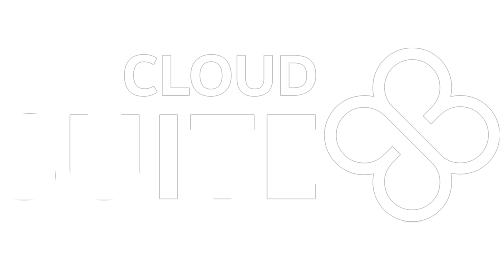ERP selection can be complicated. The why of an ERP system is fairly clear. The ERP system you choose will be the platform through which the various functional areas of your company cohere into one unified whole. It’s the umbrella that covers and connects all your business areas and systems, enabling you to share data and make better, data-driven decisions across your entire operations. Selecting and implementing an ERP software solution helps you work smarter, improving efficiency and visibility across your business processes, which includes everything from purchasing and sourcing, manufacturing, and inventory control to sales and marketing, distribution and customer relationship management.
How to select an ERP system can be a murkier issue. Selecting the right ERP system for you is not something that should be taken lightly or done hastily. Considerable organizational resources should be dedicated to procuring the right system for you and then implementing it. The cost of a failed implementation can be staggering, and costs go way beyond wasted financial investments to include disruption of business functions, frustrated employees, and frustrated customers. By the way, as you’ve probably noticed, frustrated employees and frustrated customers tend to leave you, which is about as bad for your business as it gets. The ERP planning and selection process, then, are critical for a successful ERP purchase. Below are five key criteria you’d be wise to consider before deciding upon an ERP system.
1. Your ERP selection should deliver platform scalability and flexibility
Your current list of requirements and needs should not be the only thing that guides a purchasing decision. You must also consider what features you’ll need as your business grows or experiences change going forward into the future. An ERP system must be flexible enough to scale with your needs as your business grows. A “bad” ERP system is one that you’ll outgrow in 5 to 10 years. You need to have that flexibility already baked into your ERP system. Otherwise, your “inflexible” ERP system may actually hinder your growth, rather than support it — perhaps the worst-case scenario of all.
What this means is that you must look beyond the standard features a system offers and consider how easy it will be for your ERP system to adapt to changing business needs and embracing emerging technologies. If there are excessive limitations on how much a particular ERP system can be customized, it may be worth looking elsewhere. You don’t want to “bolt on” new technologies and be forced to do complex workarounds because of an inflexible ERP system. What you want an ERP system to be is a platform for growth, meaning it’s flexible enough to support your growth and integrate emerging technologies. What you’re doing by seeking ERP agility is future-proofing your business, and that matters a lot.
2. Support for mobile users
With the advent of the bring-your-own-device (BYOD) workplace, more and more business users are accessing workflows and data through their own personal mobile devices. Giving employees the ability to work however, wherever, and whenever they see fit has boosted productivity considerably. If mobile functionality is limited, those efficiency gains will be impossible to realize.
What you don’t want to do is tie your employees to desktops and their offices. Imagine a salesperson who couldn’t access key customer data on the road, but is instead tied to a desktop if he or she wants to access key customer data. How happy and effective would that salesperson be? What would your customers think when one of your salespeople visits them and says things like “I can’t update your information related to our new agreement until I get back to the office.” Business data needs to be accessible from wherever business happens.
An ERP dashboard should be mobile friendly and accessible from anywhere at any time. When your employees are on the go, they’ll be able to easily access key workflows and data to avoid prolonged downtime. They can work at the hotel or the customer’s site. Perhaps even more important is the ability to enter and store data all in one process. When employees can enter data directly from the field, it reduces the risk of errors that occur when they have to collect data in one place and re-enter it into the system later. Mobile-friendly is a massively important ERP feature, and you should be demanding it.
3. Customer recommendations or testimonials
An ERP software vendor should be able to give you the names of a few customers to whom you can reach out and get an inside look into the whole implementation process. It’s important to note that you can’t just focus on the software itself, but should be carefully considering the collaborative experience the vendor’s implementation team brings and its overall technical/business acumen in partnering with companies like yours. In many cases where an ERP system fails to live up to expectations, it’s not necessarily because the software was deficient, but rather, something went wrong during the implementation process, such as inadequate communication.
Listening matters, so does responsiveness and building strong relationships (in addition to strong software solutions). Change isn’t simply about technology, but about processes and people too. The people stuff isn’t “soft,” and you’d better be sure you can trust and build a strong collaborative relationship between your people and the ERP vendor’s people.
4. Ease of use and contextualization
Each functional area of the business will work daily with certain kinds of data while having no use for other kinds. The user experience should be customizable for each user so that only the most relevant information is presented. This includes contextualization for international companies that will need region-specific data and units of measurement for all locales. Essentially, a good ERP system will be able to present the right information to the right people at the right time in a simple, accessible way. You should look for a great, customizable UX, or user experience. If you need to create clunky workarounds to localize and contextualize your ERP system, that’s a red flag. Your ERP system should have this already baked in.
5. Long-term costs
It’s easy to get caught up in upfront costs, but you really should consider the total cost of ownership (TCO) over the long haul. Consider long-term implementation costs related to change management. Your ERP system should be set up to mirror your future-state business processes, so as your processes evolve, your ERP system and vendor will evolve with you.
Use the 5 things listed above as you answer the question of how to select an ERP system (and vendor) that’s right for you.
ERP focus




